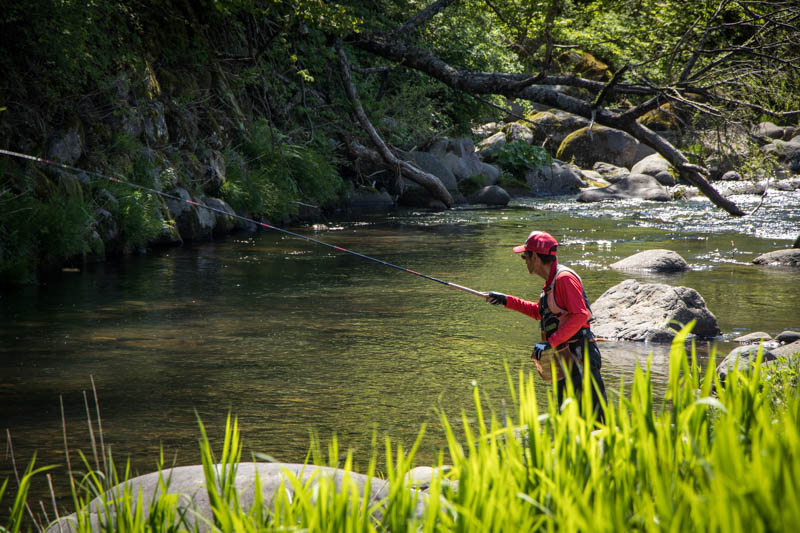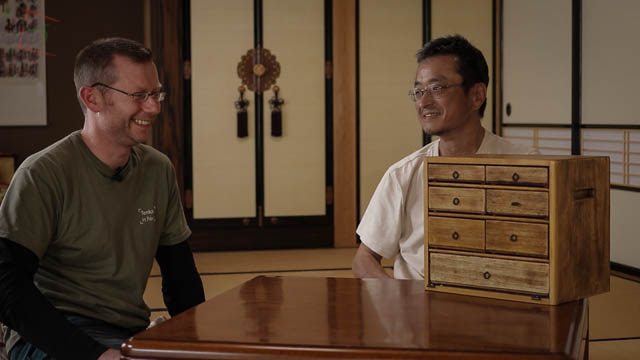Just about five days into our filming and research in Japan and it has already been a mega-trip. The amount of new content and insights that we can now share with you (through this blog and also on our YouTube channel that broadcasts Tenkara in Focus) is simply unbelievable.

The richness and subtlety of techniques used by truly expert Japanese tenkara anglers is phenomenal. But their personal stories are often equally astonishing (you might remember being introduced to Hirata san in my Facebook Article Here). Our first discoveries on this trip included much more detail on how Hirata-san constructs his horse-hair line, the cross-sectional shape of the hairs that are best to use- and the secret to making the twists perfectly even so that none of the individual strands break.
We also managed to record a ton of interviews and demos with exceptional tenkara anglers that have so far not received much of the limelight outside Japan. That sparse coverage is a huge disadvantage if you happen to live in the west – both in terms of inspiration and also the tactics that will help you succeed on stream.

We’ll be working hard to produce material so that you can understand Japanese tenkara concepts such as “Otsuri” and “Kuinami” (all will be revealed; and we know it will increase your success on stream).
As a small aside, we are delighted with the testing that is taking place on our upcoming Japanese-made Tenkara rods. We’ve now caught all three of the favourite species targeted by tenkara anglers in Japan (amago, yamame and iwana) – as well as some rather lower-status “ugui”!
Right now I am sitting writing this post in a family inn (minshuku) in the historic settlement of Akiyamago owned by Yamada-san who was previously a professional tenkara angler or “Shokuryoshi” as well as a bear hunter or “Matagi”. Yamada-san is the third generation of Shokuryoshi in his family and has already explained some fascinating secrets of the tenkara professional angler who NEEDED to catch fish to feed their family and generate income. The skills and approaches that pass through the filter of fishing for survival are incredibly valuable.
One of the most incredible things he showed us today was a small book of photographs that were made as a project by someone who visited the area specifically to catalogue as many of the local kebari (fly) patterns as he could find that were in use along the valley. The fascinating thing about that project are the similarities between some kebari – and the big differences in others.
Oh – and just as a tiny throw-away comment, Yamada-san also explained how tenkara has been referred to by name for at least 300 years in the area (after it was brought to Akiyamago by the Matagi). This is a much earlier use of the word to describe “kebari-tsuri” which was applied to what we recognise as “tenkara” today – compared to when magazines such as Tsuribito formally adopted the term as a way to separate tenkara from regular fly fishing.
More soon…

Great to almost feel the fun you guys ae having. Seems like we are there with you!
Say hi to Kuru-san & Go-san.
Same sentiments from me Neil. Sounds like you are having a ball.
I expect the socialising is going well also?